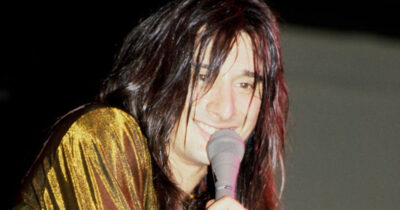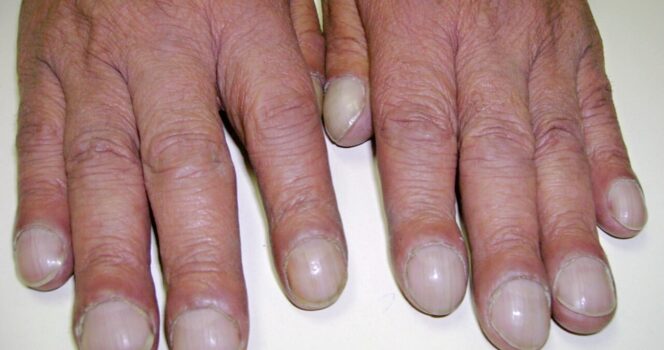
You know those little things about your body you sometimes brush off — like a nagging headache or a weird spot on your skin? Most of the time, it’s nothing.
But sometimes, your body is trying to tell you something serious. One change you definitely shouldn’t ignore? Nail clubbing.
A sign of disease
It might sound strange, but nail clubbing it’s a noticeable change in the shape and feel of your fingernails or toenails — and experts say it can be a red flag for serious health issues. In fact, ‘clubbing’ has been recognized as a sign of disease since the time of Hippocrates.
According to the Cleveland Clinic, nail clubbing happens when your nails start to look wider, swollen, or even take on an upside-down spoon shape. It occurs when the amount of soft tissue beneath the nail beds increases.
The nails can feel soft or spongy, be warm to the touch, and sometimes turn red. It often starts with the thumb and forefinger and can spread to other nails over time.
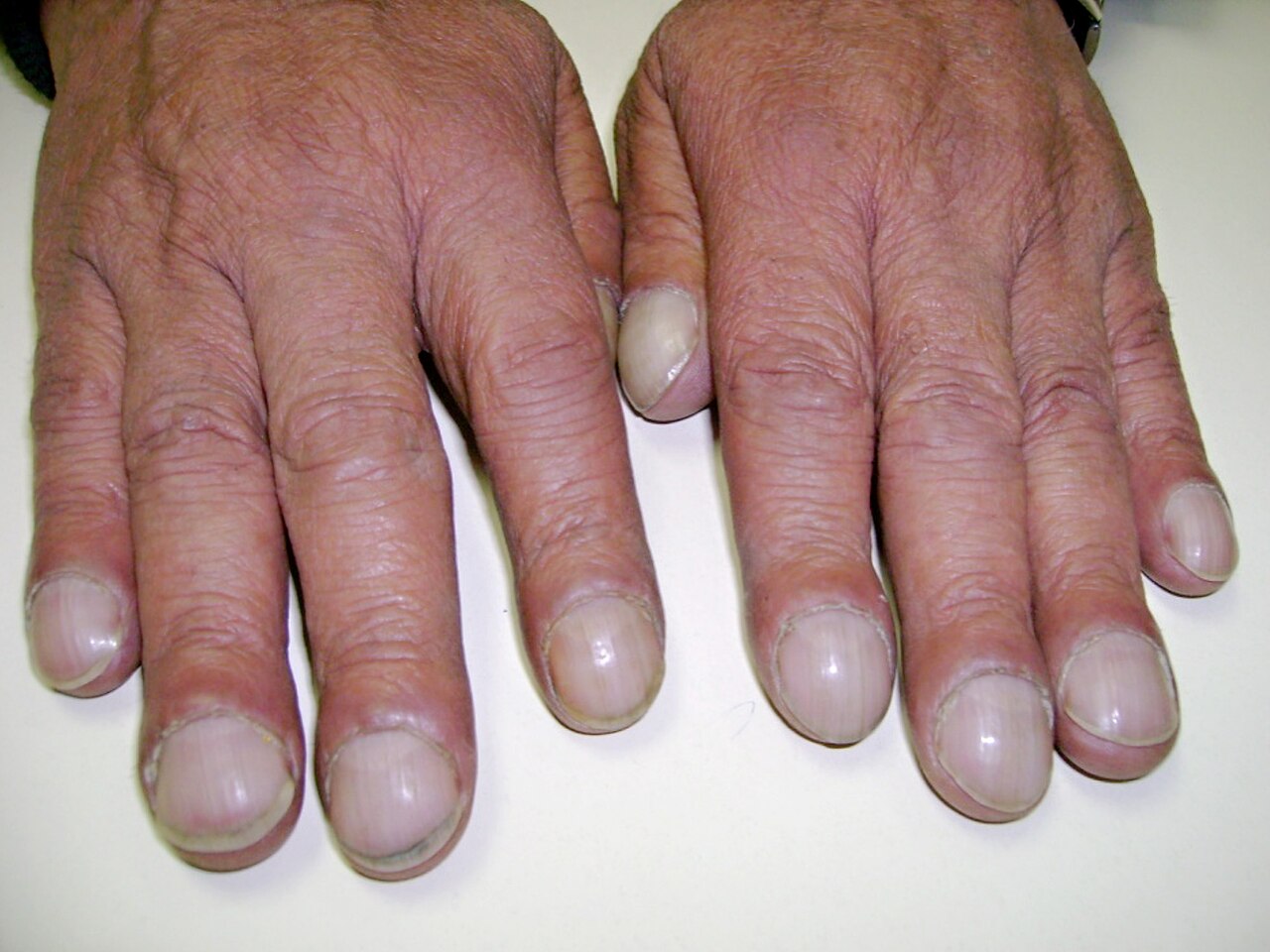
“Nail clubbing is most often associated with diseases of the heart and lungs, like lung cancer, lung infections, interstitial lung disease, cystic fibrosis or cardiovascular disease,” the clinic explains.
Dr. Chin Kai Huang, a podiatrist at London’s Guy’s and St Thomas’ Hospital, adds that clubbing is one of the most common nail changes that needs a closer look.
“One of the most common changes we see in clinics that requires further investigation is clubbing, where the inside of the nail begins to dome. This can be a sign of liver disease, lung conditions and gastrointestinal problems,” he says, according to Daily Mail.
Eye-opening statistics
Dr. Chin Kai Huang also warns that dark lines forming under the nails, though rare, can signal melanoma.
And while it may seem like a small change, the statistics are eye-opening.
A 2008 study in Belgium looked at 1,511 patients admitted to an internal medicine department and found that about 1% — 15 patients — had clubbing. Of those, 40% (6 patients) were found to have serious underlying health issues, while the remaining 60% (9 patients) had no detectable medical problems.
A 2012 study by Dr. Malay Sarkar, a lung cancer specialist in India, found that lung cancer is the main culprit behind finger clubbing — linked to nearly 90% of cases.
That said, it only affects about five to 15% of people with lung cancer, so catching it early is key. Doctors stress that if you notice your nails changing shape, color, or texture, it’s worth talking to a healthcare professional — don’t just shrug it off.
Patient shares his only warning sign
In 2025, a former patient spoke out, urging people to pay attention to clubbed fingers, saying it was the only symptom he had when he was diagnosed.
Brian Gemmell, a fitness instructor from Scotland, told The Mirror that he never had a cough and felt completely healthy. Clubbing was his only warning sign.
”I wasn’t coughing up blood, I wasn’t breathless. My one and only symptom was clubbing of the fingers, where all your fingers swell up and when you put your fingers together you can’t see a diamond. That was my only symptom. Straightaway, my GP had an idea of what it was. He sent me straight for a chest X-ray and referred me to a respiratory consultant.”
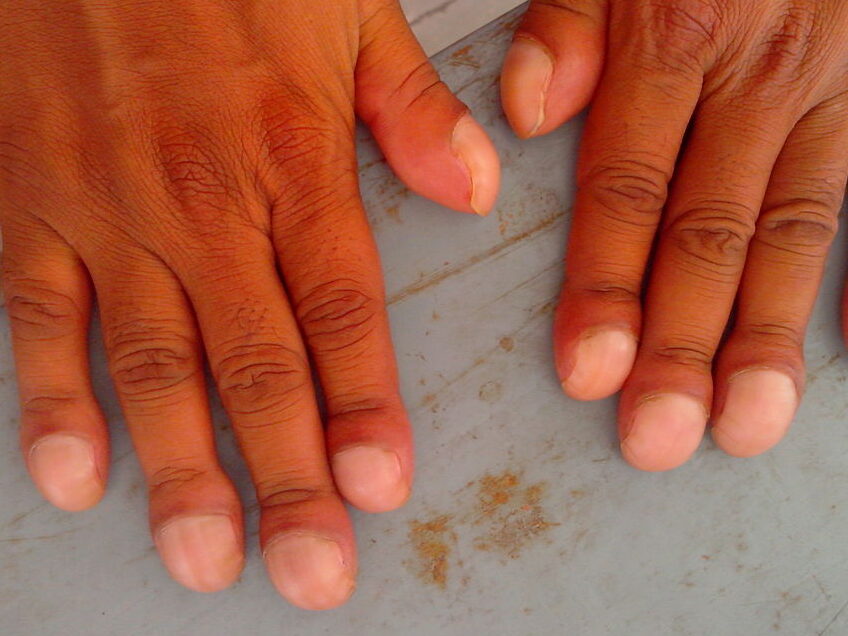
Gemmell praised his doctor for quickly recognizing the meaning behind the symptom, writing that the doctor’s expertise and decisive action “ultimately saved my life.” But he also stressed that awareness is key, since doctors can only act if patients bring potential problems to their attention.
”People think lung cancer is a death sentence. That’s not surprising with the current survival statistics,” Gemmell said. ”But it doesn’t have to be. I’m proof that it doesn’t have to be. But it’s not going to just happen. The right people have to make it happen. They have to make it a priority.”
Simple self-test you can try today
One way to check for nail clubbing is the Schamroth window test, according to Medscape. Simply press the same fingers from each hand together and hold them up in front of you.
Normally, you should see a small diamond-shaped gap of empty space between your nails. If that space is missing, it could be a warning sign worth discussing with a doctor.
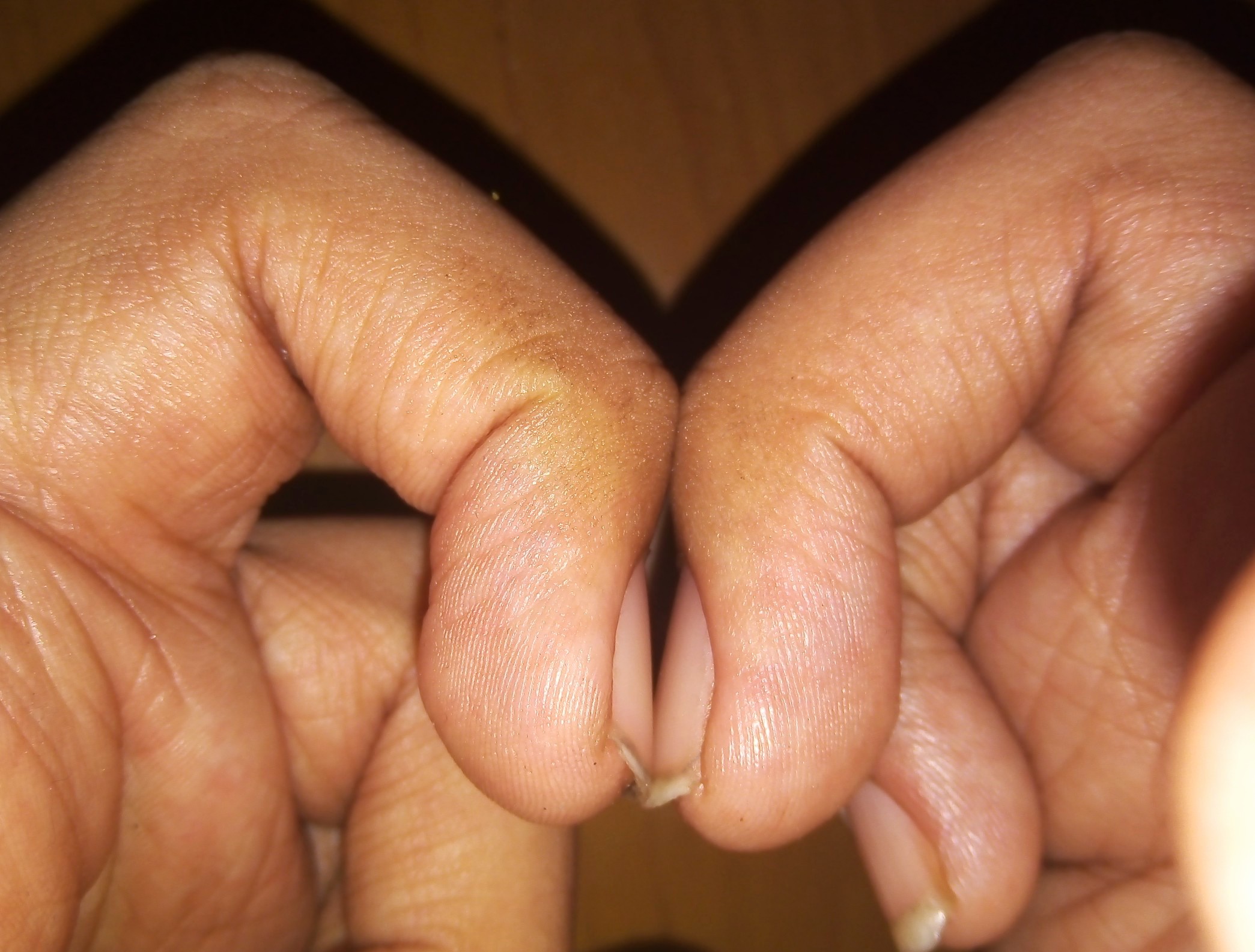
I don’t know what you think, but I feel it’s really important to learn about certain symptoms so help can come early. Often, early action makes all the difference in the outcome.
Share this article with your friends and loved ones — together we can spot these warning signs sooner and encourage each other to see a doctor when needed.
READ MORE
- Diane Keaton kept her health battle a secret for years
- One morning symptom that lingers all day could be a hidden sign of cancer
